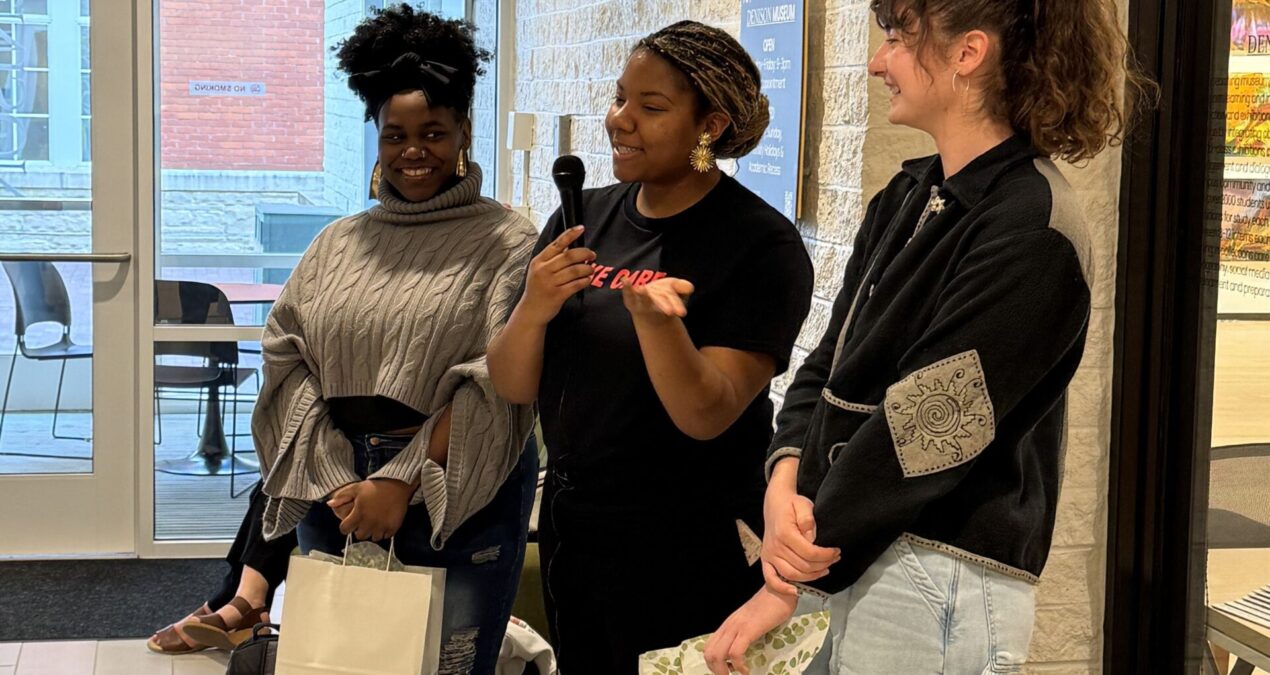Lily Charkow, Arts & Life Editor–
The Denison Museum usually features many different exhibits over the course of the academic year. Recently, the museum featured a unique showcase that was curated by a student.
The exhibit, titled “Take Care,” was directed and curated by Courtney Simmons ‘25. Simmons was originally inspired to curate her own exhibit two years prior to the opening of “Take Care,” which ran April 2-10. The exhibit created different scenes that aimed to imitate nature, and expressed themes such as accessibility and mental health.
The space was transformed to demonstrate the healing power of nature. Flowers and leaves hung from the walls, and ambient lighting contrasted with the harsh overhead lighting.
The decor in the exhibit transported visitors to the worlds depicted in the various art pieces. The artworks, which varied in mediums, illustrated images of nature and peace. And much of the artwork was created by artists native to Chicago, which is Simmons’ hometown. The city and a love of nature served as a source of inspiration for Simmons in creating the exhibit.
“Hiring an artist from Chicago brings forth how [art is] not always accessible to everyone,” said Simmons. “And it’s really just what you choose to engage in sometimes that can free you or keep you confined to what you’re feeling, whether that’s good or bad.”
The exhibit emphasized that nature can be a useful tool for personal healing as well as an accessible outlet. During the creative process, Simmons put a lot of work towards making the exhibit a welcome experience for all. This included changing or removing some of the original concepts.
“The original idea was to have music playing in the background and scent to make it a full immersive experience. But I did an internship in freshman year on art and disability and it occurred to me when I went into the room how echoey it was,” said Simmons.
“And for people who don’t have internal balance sometimes that can throw them off or make it more difficult to be in big, echoey spaces, which a lot of art galleries are.”
For this exhibit, accessibility is a diverse term. It refers not only to accessibility for visitors who are differently abled, but also visitors who are unfamiliar with the world of art. Simmons was very aware of what she calls “intellectual accessibility.” She was conscious to prevent the exhibit from being too intimidating for visitors who were incognizant to the world of art in academia.
“When I was thinking of the value this might bring to campus, or to Granville, it was the people who live here that were in mind and I just wanted it to be a gift to them,” says Simmons.

